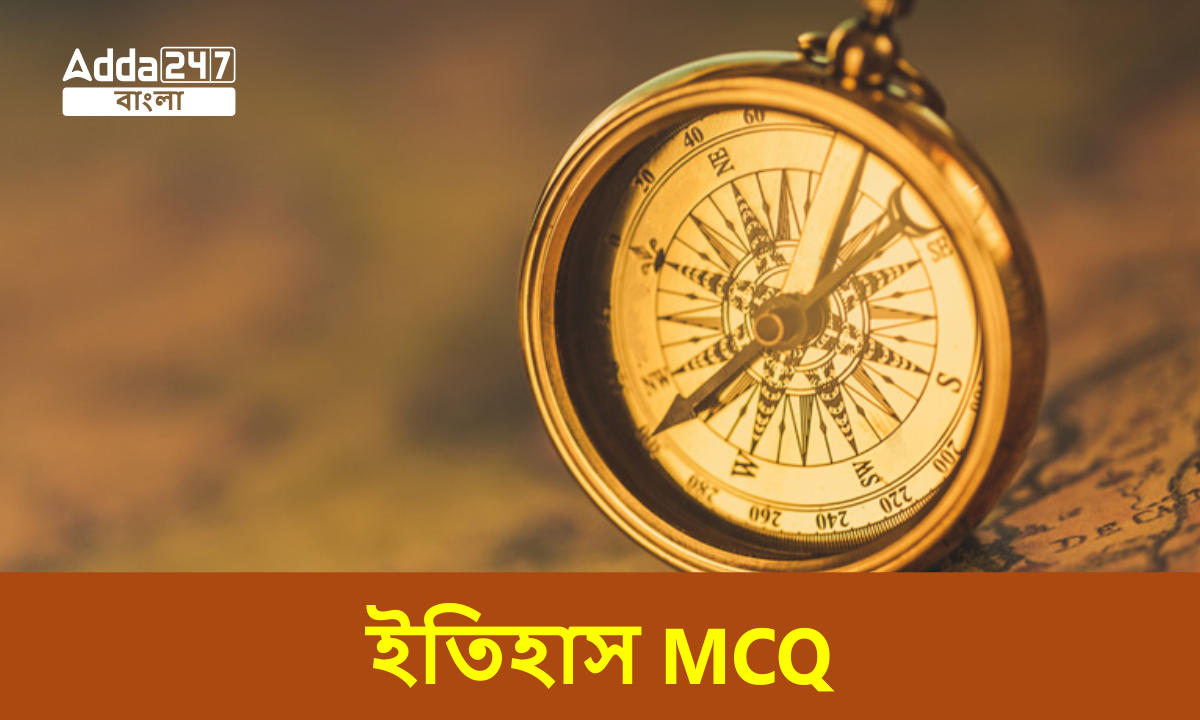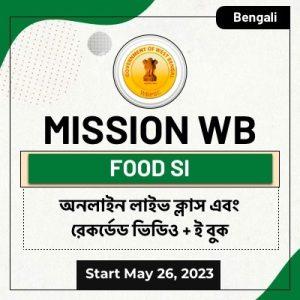ইতিহাস MCQ: Adda 247-এ আপনাকে স্বাগতম। ADDA 247 বাংলা আপনাকে WBCS, WBSSC, WBP, WBPSC, RAIL,SSC এবং BANK সহ সমস্ত প্রতিযোগিতামূলক পরীক্ষার জন্য বাংলায় ইতিহাস MCQ দিচ্ছে। এখানে আপনি প্রতিদিন সমাধান সহ একাধিক পছন্দের প্রশ্ন এবং উত্তর পাবেন। এখানে আপনি সমস্ত গুরুত্বপূর্ণ প্রশ্ন এবং উত্তর পাবেন যা আপনাকে আপনার জ্ঞান বাড়াতে এবং আপনাকে আপনার লক্ষ্য পূরণের দিকে এগিয়ে যেতে সাহায্য করবে। এই ইতিহাস MCQ নিয়মিত পড়ুন এবং পরীক্ষায় সফল হন।
| ইতিহাস MCQ | |
| বিষয় | ইতিহাস MCQ |
| বিভাগ | Daily Quiz |
| উদ্দেশ্য | WBCS পরীক্ষা |
ইতিহাস MCQ
Q1. নিম্নলিখিত বিবৃতি বিবেচনা কর:
- লিঙ্গায়তবাদের ঐতিহ্য 12 শতকে সমাজ সংস্কারক এবং দার্শনিক বাসাভান্না দ্বারা প্রতিষ্ঠিত হয়েছিল বলে জানা যায়।
- দক্ষিণ কর্ণাটকের কৃষক সম্প্রদায়কে বলা হয় ভোক্কালিগাস।
- ভোক্কালিগারা চোল সাম্রাজ্যে প্রশাসনিক পদ দখল করেছিল।
উপরে প্রদত্ত বিবৃতিগুলির মধ্যে কোনটি সঠিক?
(a) শুধুমাত্র 1
(b) শুধুমাত্র 1 এবং 2
(c) শুধুমাত্র 2 এবং 3
(d) 1, 2 এবং 3
Q2. নিম্নলিখিত বিবৃতিগুলি বিবেচনা কর:
- গুরু গোবিন্দ সিং জি তার পিতা গুরু তেগ বাহাদুরকে মুঘলদের দ্বারা শিরশ্ছেদ করার পর খালসা ঐতিহ্য শুরু করেছিলেন।
- গুরু গোবিন্দ সিং জি-এর পুত্রদের শাহাদাত উপলক্ষে ভারতে বীর বাল দিবস পালন করা হয়।
উপরে প্রদত্ত বিবৃতিগুলির মধ্যে কোনটি সঠিক?
(a) শুধুমাত্র 1
(b) শুধুমাত্র 2
(c) 1 এবং 2 উভয়ই
(d) 1 বা 2 কোনোটিই নয়
Q3. নিম্নলিখিত বিবৃতি বিবেচনা কর:
- কলিঙ্গ শিলালিপি ছিল সম্রাট অশোকের প্রথম আদেশ যেটিতে ‘দেবনমপ্রিয়া’ বা ‘পিয়াদাসী’-এর পরিবর্তে অশোক নামটি ছিল।
- রুম্মিন্দেই স্তম্ভের শিলালিপিগুলি ব্রাহ্মী লিপিতে লেখা।
উপরে প্রদত্ত বিবৃতিগুলির মধ্যে কোনটি সঠিক?
(a) শুধুমাত্র 1
(b) শুধুমাত্র 2
(c) 1 এবং 2 উভয়ই
(d) 1 বা 2 কোনোটিই নয়
Q4. নিম্নলিখিত বিবৃতি বিবেচনা কর:
- লোসার উত্সব একটি অমাবস্যার দিনে শুরু হয় যা তিব্বতি ক্যালেন্ডারে প্রথম মাসের প্রথম দিনটিকে চিহ্নিত করে৷
- লোসার তিব্বতে বৌদ্ধ ধর্মের আগমনের পূর্ববর্তী।
উপরে প্রদত্ত বিবৃতিগুলির মধ্যে কোনটি সঠিক?
(a) শুধুমাত্র 1
(b) শুধুমাত্র 2
(c) 1 এবং 2 উভয়ই
(d) 1 বা 2 কোনোটিই নয়
Q5. তিনি এলাহাবাদে জন্মগ্রহণ করেন এবং ‘পাঠশালা’ পদ্ধতিতে প্রাথমিক শিক্ষা গ্রহণ করেন এবং সংস্কৃতে দক্ষ ছিলেন। তিনি 1886 সালে কলকাতা অধিবেশনে ভারতীয় জাতীয় কংগ্রেসে যোগদান করেন। পরবর্তীতে তিনি পদে উন্নীত হন এবং চারবার সভাপতি হন – 1909 সালে (লাহোর), 1918 সালে (দিল্লি), 1930 সালে (দিল্লি), এবং 1932 সালে (কলকাতা)। রবীন্দ্রনাথ ঠাকুর তাঁকে ‘মহামনা’ উপাধি দিয়েছিলেন। উপরের বর্ণনায় নিচের কোন ব্যক্তিত্বের কথা বলা হয়েছে?
(a) ভিডি সাভারকর
(b) মদন মোহন মালব্য
(c) বিপিন চন্দ্র পাল
(d) শ্যামা প্রসাদ মুখোপাধ্যায়
Q6. নিম্নলিখিত বিবৃতি বিবেচনা কর:
- পাণিনি পরবর্তী গুপ্ত যুগে উত্তর-পশ্চিম ভারতীয় উপমহাদেশে বসবাস করতেন।
- মরিশাসে পাণিনি ভাষা পরীক্ষাগার স্থাপিত হয়েছিল তরুণদের মধ্যে হিন্দি পড়া এবং লেখার প্রচার করার জন্য।
উপরে প্রদত্ত বিবৃতিগুলির মধ্যে কোনটি সঠিক/সঠিক?
(a) শুধুমাত্র 1
(b) শুধুমাত্র 2
(c) 1 এবং 2 উভয়ই
(d) 1 বা 2 কোনোটিই নয়
Q7. নিম্নলিখিত বিবৃতি বিবেচনা কর:
- কাকোরিতে ট্রেন ডাকাতি ছিল হিন্দুস্তান রিপাবলিকান অ্যাসোসিয়েশনের (HRA) প্রথম বড় অ্যাকশন।
- চন্দ্রশেখর আজাদ হলেন এই সময়ে HRA-এর একমাত্র নেতা যিনি গ্রেপ্তার এড়িয়েছিলেন।
উপরের প্রদত্ত বিবৃতিগুলির মধ্যে কোনটি সঠিক?
(a) শুধুমাত্র 1
(b) শুধুমাত্র 2
(c) 1 এবং 2 উভয়ই
(d) 1 বা 2 কোনোটিই নয়
Q8. তিনি গণপরিষদের কমিটিতে কার্যপ্রণালীর বিধি ও পরিচালনা কমিটির চেয়ারম্যান ছিলেন। তিনি তাঁর জীবন এবং স্বাধীনতার আগের দশকগুলিকে অনেক বইয়ে লিপিবদ্ধ করেছেন, যার মধ্যে “চম্পারণে সত্যাগ্রহ” (1922), “ভারত বিভক্ত” (1946), এবং তাঁর আত্মজীবনী “আত্মকথা” (1946)। উপরোক্ত বর্ণনায় কোন ব্যক্তিত্বের উল্লেখ আছে?
(a) আল্লাদি কৃষ্ণস্বামী আয়ার
(b) জওহরলাল নেহেরু
(c) K.M. মুন্সি
(d) রাজেন্দ্র প্রসাদ
Q9. সম্প্রতি মহাপরিনির্বাণ দিবস পালিত হয়েছে, এটি ——-এর সঙ্গে সম্পর্কিত
(a) লাচিত বারফুকন
(b) স্বামী বিবেকানন্দ
(c) বি আর আম্বেদকর
(d) রাজা রাম মোহন রায়
Q10. সম্প্রতি অহননুর সংবাদটি শিরোনামে দেখা গেছে, এটি ———এর সঙ্গে সম্পর্কিত।
(a) ভারতীয় নৃত্য ফর্ম
(b) একজন উচ্চপদস্থ কর্মকর্তার জন্য অফিসিয়াল শিরোনাম
(c) বৌদ্ধ উপাসনালয়
(d) কবিতার সংগ্রহ
ইতিহাস MCQ সমাধান
S1.Ans.(b)
Sol.
Lingayats:
- The term Lingayat denotes a person who wears a personal linga, an iconic form of god Shiva, on the body which is received during the initiation ceremony.
- The tradition of Lingayatism is known to have been founded by social reformer and philosopher Basavanna in 12th century Karnataka.
- Lingayats had been classified as a Hindu subcaste called “Veerashaiva Lingayats” and they are considered to be Shaivites.
- The emergence of the Lingayat sect can be located within the larger trend of Bhakti movements that had swept across South India from the 8th century AD onwards.
Vokkaligas:
- The agricultural communities of south Karnataka are called Vokkaligas. People belonging to the Vokkaliga community are known as Okkalia of Utkala Kingdom.
- As a community of warriors and cultivators they have historically had notable demographic, political, and economic dominance in Old Mysore (region).
- It is believed by some historians that the Rashtrakutas and Western Gangas were of Vokkaliga origin. The Vokkaligas occupied administrative positions in the Vijaynagar Empire.
S2.Ans.(c)
Sol.
Guru Gobind Singh Ji:
- Statement 1 is correct:
o Guru Gobind Singh started the Khalsa tradition after his father, Guru Tegh Bahadur, was beheaded during the Islamic sharia rule of the Mughal Emperor Aurangzeb.
- Statement 2 is correct:
o Veer Bal Diwas was recently commemorated in India on December 26th for the first time.
o The day was observed to mark the martyrdom of Sri Guru Gobind Singh’s sons Sahibzadas Baba Zorawar Singh Ji and Baba Fateh Singh Ji.
S3.Ans.(b)
Sol.
- Statement 1 is not correct: Maski Inscription (Karnataka) lies on the bank of the Maski river which is a tributary of the Tungabhadra. It was the first edict of Emperor Ashoka that contained the name Ashoka in it instead of ‘Devanampriya’ or ‘Piyadassi’.
- Statement 2 is correct: Rummindei Pillar Edicts (Lumbini) inscriptions come under the Minor Pillar Inscriptions. These contain inscriptions recording their dedication. The inscription mentions Ashoka’s visit to Lumbini (Rummindei), Rupandehi district, Nepal, the birthplace of Lord Buddha. Ashoka exempted Lumbini from paying tax, and fixed its contribution of grain at one–eighth. The inscriptions are written in Brahmi script.
S4.Ans.(c)
Sol.
Losar Festival
- About:
o One of the most significant celebrations in the Tibetan calendar.
o It begins on the day of a new moon that marks the first day of the first month on the Tibetan calendar.
o Losar is celebrated for 15 days, with the main celebrations on the first three days.
- Meaning:
o The term ‘Losar’ means New year in the Tibetan language. ‘Lo’ means year and ‘Sar’ means new.
- Ancient Roots:
o Losar predates the arrival of Buddhism in Tibet and has its roots in a winter incense-burning custom of the Bon religion.
- Celebrated At:
o Tibet, Bhutan, Nepal, India
o In India- Ladakh, Kinnaur, Spiti, Sikkim
S5.Ans.(b)
Sol.
Pt. Madan Mohan Malaviya
- About:
o He was born in Allahabad and took early education under the ‘pathshala’ system, and was proficient in Sanskrit.
o In 1879, he graduated from the Muir Central College (now Allahabad University) and started working as a teacher at a local high school.
o He joined the Indian National Congress at its Calcutta session in 1886 o He rose up the ranks, and became president four times — in 1909 (Lahore), in 1918 (Delhi), in 1930 (Delhi), and in 1932 (Calcutta). o Malaviya was part of the Congress for almost 50 years.
o Malaviya was one of the early leaders of the Hindu Mahasabha and helped found it in 1906.
- Contributions:
o He was a scholar and thinker who worked towards spreading education among citizens and supported the nationalisation of railways.
o He helped establish the Hindu Mahasabha (“Great Society of Hindus”) in 1906, which brought diverse local Hindu nationalist movements together.
o He is known for founding the Banaras Hindu University in 1916 and for becoming one of the torchbearers of the freedom struggle acting as a bridge between the Moderates and the Extremists in the Congress.
o In the freedom struggle, Malaviya was midway between the Liberals and the Nationalists, the Moderates and the Extremists.
o In 1930, when Mahatma Gandhi launched the Salt Satyagraha and the Civil Disobedience Movement, he participated in it and courted arrest.
S6.Ans.(b)
Sol.
- In his PhD thesis published recently, an Indian student claims to have solved Sanskrit’s biggest puzzle—a grammar problem found in the ‘Ashtadhyayi’.
- Statement 1 is not correct: Panini was an ancient Sanskrit philologist, grammarian, and a revered scholar in ancient India during 4th century BC. He was considered as the father of linguistics and lived in the northwest Indian subcontinent during the Mahajanapada era. He is known for his text Ashtadhyayi, a sutra-style treatise on Sanskrit grammar.
- Statement 2 is correct: Panini language laboratory was established at Mahatma Gandhi Institute in Mauritius to promote reading and writing Hindi amongst young and its further development. It was launched by the External Affairs Minister on the sidelines of the 11th World Hindi Conference held in Mauritius.
S7.Ans.(c)
Sol.
Kakori Train Action incident
- The train robbery at Kakori was the HRA’s first major action, in August 1925.
- The Number 8 Down Train ran between Shahjahanpur and Lucknow. o It carried treasury bags meant to be deposited in the British treasury in Lucknow.
o The revolutionaries planned to rob this money, which they believed legitimately belonged to Indians anyway.
- Their objective was both to fund the HRA and garner public attention for their work and mission.
o On August 9, 1925, as the train was passing the Kakori station, about 15 km from Lucknow, Rajendranath Lahiri, a member of the HRA who was already seated inside, pulled the chain and stopped the train.
o Subsequently, around ten revolutionaries, including Ram Prasad Bismil and Ashfaqullah Khan, entered the train and overpowered the guard.
o They looted the treasury bags and escaped to Lucknow.
- Response of Britishers: The British authorities were enraged, undertaking a violent crackdown and soon arresting many members of the HRA.
o The only major leader of HRA at this time who evaded arrest was Chandrashekhar Azad. o The severity of the British response was somewhat surprising, especially the handing out of capital sentences.’
- Status of HRA: In 1928, a year after the execution of the Kakori Conspiracy accused, the HRA merged with various other revolutionary groups that had emerged in Punjab, Bihar, and Bengal and became the Hindustan Socialist Republican Association (HSRA)
S8.Ans.(d)
Sol.
About Dr. Rajendra Prasad
Contribution to Constitution Making: In 1946, Rajendra Prasad joined the Interim Government of India as the Minister of Food and Agriculture.
As a firm believer in the maximization of agricultural production, he crafted the slogan “Grow More Food.”
He was elected as a member of the Constituent Assembly from the Bihar Province where he served as the president of the Constituent Assembly from 1946 to 1950.On 24th January 1950, at the last session of the Constituent Assembly, Prasad was elected as the President of India and has the distinction of being the only President to have been re-elected for a second term. o Committees of Constituent Assembly under the chairmanship of Dr. Prasad includes:
- Ad hoc Committee on the National flag
- Committee on the Rules of Procedure
- Finance and Staff Committee
- Steering Committee
- Writings: He recorded his life and the decades before independence in manybooks, among the more noted of which are “Satyagraha at Champaran” (1922), “India Divided” (1946), his autobiography “Atmakatha” (1946), “Mahatma Gandhi and Bihar, Some Reminiscences” (1949), and “Bapu ke Kadmon Mein” (1954).
- Awarded Highest Civilian Award: In 1962, after 12 years as President, Dr. Prasad retired, and was subsequently awarded the Bharat Ratna, the nation’s highest civilian award.
S9.Ans.(c)
Sol.
- December 6 is observed as the Mahaparinirvan Diwas, or the death anniversary, of Dr BR Ambedkar, the Father of the Indian Constitution.
- It is considered as liberation from Samsara, karma, and the cycle of death and birth. It is the most sacrosanct day in the Buddhist calendar.
- As per the Buddhist texts, the death of Lord Buddha is considered to be Mahaparinirvan – the Sanskrit term which means ‘nirvana after death.
S10.Ans.(d)
Sol.
- In News: As part of the Karthigai festival, devotees light Lakshadeepam (lighting of one lakh lamps) at Sri Soundararaja Perumal Temple in Tamil Nadu.
- Tamil Nadu celebrates Karthigai Deepam as the traditional festival.
- It is also celebrated in neighboring states like Kerala, Andhra Pradesh, and Karnataka.
- One can find a reference to this festival of lights in the age-old literature of Tamils known as Ahananuru, a collection of poems.
- It is one of the great books of Sangam literature that talks about the happenings between 200 BC and 300 AD.
- Avaiyyar, a renowned woman of Sangam age also mentions karthigai Deepam in her poems




